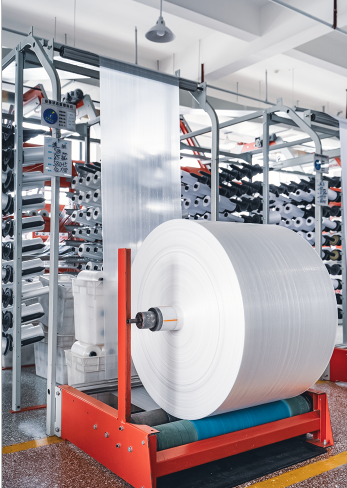Choose GSM based on your load capacity and handling conditions. Use 160-200 GSM for loads up to 1,000kg, 200-280 GSM for heavier materials up to 2,000kg, and add 10-20 GSM for coatings. You’ll also want to factor in safety requirements and environmental conditions like outdoor storage or rough handling.
GSM (grams per square meter) measures fabric density and directly affects bag strength. For woven packaging bags, the right GSM depends on what you’re storing and how you handle it.
Standard GSM ranges for different applications:
Most operations find 180-220 GSM provides the sweet spot between cost and performance for typical industrial materials.
FIBC bag calculation involves several steps that determine your total fabric weight. The process requires understanding your load requirements, safety factors, and additional features.
Start with your maximum load capacity. A standard 1,000kg capacity bag typically needs base fabric around 170-200 GSM. Heavier loads require proportionally higher GSM.
Calculate using this basic formula: Base GSM = (Load Capacity ÷ Safety Factor) × Material Factor
Safety factors typically range from 5:1 to 6:1, meaning a 1,000kg bag should theoretically hold 5,000-6,000kg without failing.
Coated fabrics add 10-20 GSM to the base weight. UV treatments, anti-static properties, and moisture barriers each contribute additional weight that affects your total GSM calculation.
For example:
Outdoor storage, temperature extremes, and chemical exposure may require higher GSM fabrics. These conditions stress the material beyond normal load requirements.
The GSM testing process involves precise measurement and careful documentation of fabric weight. At XIFA, we test every fabric batch to ensure you get exactly the GSM you ordered.
Our technician starts by measuring and cutting exact fabric samples using a ruler and cutting tools. Each sample gets cut to a specific size so we can calculate the weight per square meter accurately. Then each sample gets weighed on our calibrated digital scale that measures down to precise decimal points.
We record every weight measurement on quality control sheets and test multiple spots across each fabric roll to check for consistency. Using the standard GSM formula, we calculate the exact grams per square meter for each sample.
This thorough testing catches any variations before production begins. So when you order 250 GSM fabric, our testing process ensures that’s exactly what you receive.
Standard GSM varies by industry and application, but common ranges have emerged based on proven performance:
Construction Materials: 200-250 GSM handles sand, gravel, and building supplies that require robust containment under rough handling conditions.
Agricultural Products: 180-220 GSM works well for grain, seed, and fertilizer applications where moderate strength meets cost requirements.
Chemical Products: 220-280 GSM provides the strength needed for dense materials and potential chemical exposure during handling.
Food Grade Applications: 180-200 GSM typically suffices since food products are lighter and handling is more controlled.
The answer depends entirely on your specific requirements. Higher GSM isn’t automatically better if you’re paying for strength you don’t need.
Choose 200 GSM when:
Choose 300 GSM when:
The cost difference can be significant. 300 GSM fabric costs about 50% more than 200 GSM, but provides substantially better durability and load capacity.
Tight weaves provide more strength per GSM than loose weaves. The fabric construction affects both strength and cost, making weave pattern as important as total weight.
Virgin polypropylene performs better than recycled materials at the same GSM. UV stabilizers, anti-static treatments, and other additives affect both performance and cost.
Hot climates may require higher GSM for UV resistance. Cold conditions can make lower GSM fabrics brittle. Factor your operating environment into GSM selection.
Higher GSM fabrics cost more initially but may provide better value through reduced failures and longer service life. Calculate total cost including potential product losses from bag failures.
Consider these factors:
Often, the premium for higher GSM pays for itself through improved reliability and reduced operational disruptions.
Start by clearly defining your requirements: load capacity, handling conditions, storage environment, and budget constraints. Test samples with your actual materials and conditions before committing to large orders.
Work with experienced manufacturers who understand GSM requirements for different applications. XIFA’s expertise in GSM packaging helps customers select optimal specifications for their specific needs.
Remember that the right GSM balances performance, cost, and reliability for your specific application. Don’t overpay for strength you won’t use, but don’t risk failures with inadequate specifications.




